#paul schimmel
Text
A review of “Persophilia’ of Hamid Dabashi
“Shaj Mathew reviews Persophilia
Hamid Dabashi. Persophilia: Persian Culture on the Global Scene. Cambridge, Mass.: Harvard University Press, 2015. 296 pp.

Review by Shaj Mathew
28 November 2018
In Persophilia, Hamid Dabashi explores the consequences of the European fascination with all things Persian, examining texts by Montesquieu, Voltaire, Johann Wolfgang von Goethe, and Friedrich Nietzsche; artwork by Paul Gauguin and Henri Matisse; the scholarship of E. G. Browne and Annemarie Schimmel; and even the films of Abbas Kiarostami. Dabashi narrates a dynamic process whereby Persian culture travels outside of its imperial courts, becomes the idée fixe of European artists and intellectuals, and returns from Europe utterly transformed by its cross-cultural and colonial encounters. In recovering this lively but largely unacknowledged artistic and critical circuit of exchange—which begins in seventeenth-century Europe, becomes prominent in the eighteenth and nineteenth century, and continues into the present—Dabashi models a vein of cross-cultural comparison that scholars of all disciplines should heed.
Dabashi investigates the effects of European (and later American) persophilia through an engagement with Edward W. Said, Raymond Schwab, and Jürgen Habermas. Said and Schwab offer causal explanations for Europe’s interest in the so-called Orient. For Said, Europe created knowledge about the “Orient” in order to dominate and colonize it; for Schwab, European artists viewed the “Orient” as an imaginative or artistic substrate. But for Dabashi, “abandoned in both their projects is the fate of the Orientalized societies themselves—or what happens to Persian, Indian, Arabic, or Chinese literary and artistic traditions (and the emerging public spaces that are hosting them) once they have been translated into a European context” (p. 9). To correct this lack, Dabashi turns to Habermas, whose concept of the public sphere allows Dabashi to provide an account of the effects of persophilia that is neither cultural (Schwab) nor political (Said) but social.
This social or societal account of persophilia obviates two biases that tend to dominate critical thought about the postcolonial state: the critique of European Orientalism (which, for Dabashi, “paradoxically assigns universal agency to a Eurocentric conception of the world”) and a radical anti-Western nationalism (p. 206). Although “both sides of this binary—the critique of Orientalism and the appeal of nativism—are both necessary and even logical for the historical circumstances in which they were launched,” Dabashi writes, “at the same time they have both come together paradoxically to rob the postcolonial person of historical agency and moral and authorial imagination” (p. 206). Dabashi’s attempt at restoring agency and imagination to the “postcolonial person” rests on the following claims about the cycle of European persophilia: Persian culture exited its royal courts and entered the emerging European bourgeois public sphere through art, literature, and philology, largely in the eighteenth and nineteenth centuries; this European bourgeois public sphere became transnational in light of this encounter with Persia (and other cultures); this newly transnational public sphere periodically reentered Persia through the circulation of eighteenth- and nineteenth-century texts and through the twentieth-century colonial encounter; and finally, the appropriation of the transnational public sphere by twentieth-century Persians provided them with the tools to resist European imperialism. With each stage of persophilia—from Persia, to Europe, and back—Dabashi underscores the fact that the ideas and texts being exchanged underwent mutations.
Dabashi’s argument unfolds over twelve brief chapters, each of which describes a cycle of persophilia organized around one or two literary or scholarly figures. In chapter two, for example, he describes the windy path of Montesquieu’s Persian Letters (1721), which was inspired by the travels of two Frenchmen to Isfahan in the seventeenth century. Persian Letters of course reverses that voyage, and describes, in epistolary fashion, the satirical observations of two Persians in France; Dabashi’s gloss of Persian Letters allows him to claim that European persophilia was at the heart of the European Enlightenment. In support of Persophilia’s overall argument about cultural flows, Dabashi then demonstrates how Montesquieu’s persophilia came to influence Persian writers themselves. Accordingly, Dabashi zooms in on one Persian intellectual, Mirza Fath Ali Akhondzadeh (1812–1878), who wrote his own epistolary work, the Correspondences of Kamal al-Dowleh (Maktubat-e Kamal al-Dowleh; 1863), after being exposed to the ideas of Montesquieu as well as those of Voltaire and Jean-Jacques Rousseau. Akhondzadeh was a prolific dramatist and essayist whose writings often transliterated words such as “civilization” and “despotism” directly into Persian—“a clear indication,” for Dabashi, that these concepts “entered Persian prose directly under the influence of Montesquieu and other French Enlightenment thinkers” (p. 56). Throughout his wide-ranging career, Akhondzadeh also launched a campaign to latinize the Persian alphabet and debated the merits of liberal democracy. In short, his intellectual production, originally inspired by persophilic European thinkers such as Montesquieu, helped open a public sphere in Persia—a prime example of how Persian culture drifted into Europe and returned to Persia to catalytic effect.
Chapter four, entitled “Goethe, Hegel, Hafez, and Company,” is similarly exemplary of Dabashi’s argument. Here he describes how Goethe’s fascination with Hafez and Saadi Shirazi, newly translated into German during his lifetime, led to the publication of the West-östlicher Divan in 1819. Likewise, for G. W. F. Hegel, these translations created an image of Persia against which he could define European thought in his philosophy of world history. For many German romantic thinkers of the early nineteenth century, classical Persian poetry—with its strains of self-annihilation and rebirth—fed into a form of nationalist mysticism that would ultimately provide cover for the political repression of liberal thought. Romantic beliefs proliferating in nineteenth-century Germany, influenced by their appropriation of Persian and “Sufi” poetic mysticism, had “a joint proclivity toward political absolutism” that reentered Persia in the twentieth century through the thought of Seyyed Hossein Nasr (p. 100). Under the sway of the Swiss-German mystic Frithjof Schuon, Nasr would launch a critique of modernity that “had a direct root in these German sources of romanticism, mysticism, and fascism” (p. 101). Nasr’s antimodern ideology would provide cover for both the Pahlavi dynasty and its destroyer, Ayatollah Khomeini.
The chapters I have sketched above are emblematic of Dabashi’s method in this book, which regularly marshals substantial and engaging evidence to support his cyclical theory of persophilia. Persophilia’s main shortcoming has to do with the last movement of its argument, which asserts that the public sphere in Persia was not restricted to the bourgeoisie and in fact admitted subaltern classes; this claim, while prominent in the introduction, is mentioned only en passant in most chapters, and does not receive the same space and explanatory treatment enjoyed by the work’s other major ideas. In some ways the counterpart to Dabashi’s previous book—The World of Persian Literary Humanism (2012), which narrated the various stages of Persian literature’s understanding of itself in a fashion reminiscent of Hayden White’s Metahistory (1973)—Persophilia joins a wave of scholarship that sheds light on the global origins of phenomena typically considered the province of specific national traditions. Furthermore, it generates new ways of thinking about global culture that do away with tired dichotomies such as East and West, center and periphery, and tradition and modernity. What makes Persophilia an especially urgent and impressive accomplishment is that Dabashi achieves all this without advocating for parity or equivalence and without ignoring the asymmetrical power relations that underlie all encounters between cultures.”
Source: https://criticalinquiry.uchicago.edu/shaj_mathew_reviews_persophilia/

Shaj Mathew, PhD, Assistant Professor at Trinity College, is a scholar of global modernist literature. He writes about literature and film in English, Spanish, Turkish, and Persian, often in a cross-cultural key.
3 notes
·
View notes
Text
vimeo
Talea Ensemble:
James Baker, conductor
Barry Crawford, flute
Yoshi Weinberg, flute
Michelle Farah, oboe
Rane Moore, clarinet
Marianne Gythfeldt, clarinet
Erin Rogers, saxophone
Adrian Morejon, bassoon
Nicolee Kuester, horn
Sam Jones, trumpet
Mike Lormand, trombone
Alex Lipowski, percussion
Bill Solomon, percussion
Nuiko Wadden, harp
Steve Beck, piano
Bill Schimmel, accordion
Karen Kim, violin
Johnna Wu, violin
Leah Asher, viola
Josh Henderson, viola
Christopher Gross, cello
John Popham, cello
Greg Chudzik, bass
Video Production:
H. Paul Moon, cameras & editing
Kyabell Glass, additional camera
Abigail Hoke-Brady, lighting designer
Caley Monahon-Ward, recording & sound mix
Festival Staff:
Thomas Fichter, Executive/Artistic Director
Caley Monahon-Ward, Director of Production
Kayleigh Butcher, Program Coordinator
Carly Levin, Production Manager
Chris Griswold, Assistant Production Manager
Recorded at Mary Flagler Cary Hall, DiMenna Center for Classical Music, New York City on August 26, 2023. Produced for TIME:SPANS 2023 by the Earle Brown Music Foundation Charitable Trust.
0 notes
Photo

Wonderful Gary Lang show of 35 of his target paintings curated and organized by Paul Schimmel. Unfortunately, this short run exhibition was by invitation only. Hopefully, it will find another venue soon. @garylangart @therealpaulschimmel #abstractpainting #contemporarypainting #abstractsculpture #abstractart #sculpture #sculptor #sheltonbigart rt #contemporarysculptor #contemporarysculpture #petersheltonsculptor #petersheltonsculpture @petersheltonsculptor @petershelton.com @petershelton @sheltonbigart #petershelton #bigart #sheltonbigart (at Venice Beach) https://www.instagram.com/p/Co8Mo2mSoPk/?igshid=NGJjMDIxMWI=
#abstractpainting#contemporarypainting#abstractsculpture#abstractart#sculpture#sculptor#sheltonbigart#contemporarysculptor#contemporarysculpture#petersheltonsculptor#petersheltonsculpture#petershelton#bigart
0 notes
Photo

Feast your eyes on 'Amoako Boafo,' published by @robertsprojects ! This is the first monograph on the sinuous, exhilaratingly colorful and pattern-filled portraiture of Ghanaian painter Amoako Boafo. Exclusively portraying individuals from the diaspora and beyond, Boafo invites a reflection on Black subjectivity, diversity and complexity. His portraits, notable for their bold colors and patterns, celebrate his subjects as a means to challenge portrayals that objectify and dehumanize Blackness. As Boafo has stated, “the primary idea of my practice is representation, documenting, celebrating and showing new ways to approach Blackness.” Foreword by Camille Weiner. Text by Osei Bonsu, Rachel Cargle, Mutombo Da Poet, Aja Monet. Interview by Paul Schimmel. Read more via linkinbio. @amoakoboafo @oseibonsu_ @rachel.cargle @mutombodapoet @ajamonet @therealpaulschimmel #AmoakoBoafo https://www.instagram.com/p/CoVWganJToi/?igshid=NGJjMDIxMWI=
0 notes
Video
youtube
Show closes tomorrow, Sat., Dec 17. Visit 2 to 4pm.
Watershed: 2022 Artspace Members' Biennial Exhibition
Photos of the installed exhibition. November 11 - December 17, 2022.
Featured artists include: Judith Anderson, Susanne K. Arnold, Menna Beidjeu, Joy Black, Susan Cary, Alice Anne Ellis, Jo Farris, Steve Ferretti, Elisabeth Flynn-Chapman, Kay Franz, Dana Frostick, Donna Frostick, Sandhi Schimmel Gold, Elaine Harris, Ed Holten, Sue Jachimiec, Richelle Kaufman-Anderson, Jere Kittle, Lisa Lezell Levine, Lew Lott, Martin McFadden LRPS, Carol Meese, Susan Moncure, Dallas Mosman, Annette Norman, S. Nye-Moran, Carl Patow, Michael Pierce, Martha Prideaux, Elaine Rogers, Rob Ryder, Janet Scagnelli, Linda Shields, Ed Tepper, Paul "Buddy" Terrell, Heidi Thacker, and Kathleen Westkaemper.
0 notes
Text
Trailblazer logo pop art

#Trailblazer logo pop art series#
The movement is influenced by two Japanese movements Magna and Anime, which are: Superflat is used to refer to various flatforms in Japanese graphic arts. It is tough to talk about Takashi Murakami without talking about the word he coined called “Superflat.” Superflat is a post-modern art music movement founded by Takashi Murakami. Video can’t be loaded because JavaScript is disabled: The Hysteria of This Flower Explained | Behind The HYPE: Murakami’s Flowers () Superflat Art Movement The discover more about these Murakami Flowers, below is a “Behind the Hype” Video called “The Hysteria of This Flower Explained – Murakami Flowers.” Takashi Murakami shows us all that fine artists can also be successful commercial artists and that fine artist can collaborate with well-known and iconic brands. Takashi Murakami and the Murakami Flowers have bridged the gap between consumerism, fine Art, fashion, pop-culture, and streetwear all of these art forms have been touched with Murakami Flowers. When you look at his Murakami Flowers you can see that the flowers have some hidden tears. The Murakami Flower is found on everything from food packaging to pop culture to luxury goods the Murakami Flower has transcended all kinds of art.īut these Murakami Flower drawings are not just simply flowers. But it has also taken over pop culture, and the Murakami Flowers can be found on all types of objects. Takashi Murakami’s flower artwork sells for millions of dollars. Takashi Murakami, At Tai Kwun’s JC Contemporary Art Gallery, Hong Kong You can watch the official video of Billie Eilish, You Can See Me In The Crown below. In 2007 Takashi Murakami provided the cover artwork for the rapper Kanye West’s album “Graduation.” He also directed an animation video for “Good Morning” and a music video for Billie Eilish for his song “You Should See Me in a Crown.” He realized from the beginning that if you don’t address the commercial aspect of the work, it’s somehow like the elephant in the room.” Paul Schimmel, MOCA’S CHIEF CURATOR “One of the most radical aspects of Murakami’s work is his willingness both to embrace and exploit the idea of his brand, to mingle his identity with a corporate identity and play with that. Paul Schimmel, Museum of Contemporary Art, Chief Curator, said to the New York Times how Takashi Murakami understood commercialization and art. For example, during a Takashi Murakamiart exhibition at the Museum of Contemporary Art in Los Angeles, there was also a pop-up store selling Louis Vuitton handbags Some art critics felt that he was using his art with too much commercialization it took away from the art. That is by all account a long time for an artist to collaborate with a brand. His relationship with Louis Vuitton and Marc Jacobs lasted for 13 years. It was a huge success and helped Takashi become a commercial success.
#Trailblazer logo pop art series#
Takashi collaborated with Louis Vuitton to design a series of handbags using its monograms in ways it has never been used before. In 2002 he totally changed the way we view the iconic brand Louis Vuitton. He is an artistic trailblazer that has changed the artwork. Takashi Murakami is a contemporary Japanese artist known for blurring the lines between high art and commercial art. The Popularity of The Iconic Artist Takashi The Popularity of The Iconic Artist Takashi.

0 notes
Photo

Installation views, Pt. 2: Invasive Species, organized by Anat Ebgi, Paul Schimmel and Stefano di Paola, Anat Ebgi Gallery, Los Angeles, CA. LINK
0 notes
Text
BOOK - Out of Actions: Between Performance and the Object, 1949-1979 by Paul Schimmel.
Schimmel, Paul. Out of Actions: Between Performance and the Object, 1949-1979 [Exhibition, Los Angeles, Museum of Contemporary Art, 8 February-10 May 1998, Vienna, Austrian Museum of Applied Arts, 17 June-6 September 1998, Barcelona, Museu d’art Contemporani, 15 October 1998-6 January 1999, Tokyo, Museum of Contemporary Art, 11 February-11 April 1999]. Museum of Contemporary Art Thames and Hudson, 1998.
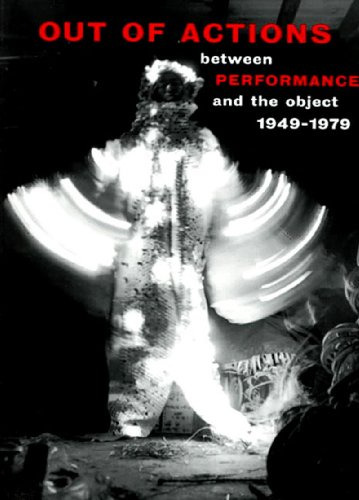
This book was suggested to me by my research lecturer Kingsley. I got it out of the library and found it a super interesting and relevant read. There was a lot on John Cage and Jackson Pollock who I've found very influential in my practice. Below are my notes from the various chapters:
Schimmel, Paul. “Leap into the Void: Performance and the Object.” Out of Actions: Between Performance and the Object, 1949-1979, organised by Paul Schimmel, Thames and Hudson Ltd, 1998, pp. 16-119.
“Whether manifested as a studied Zen line, a heroic but fleeting painterly gesture, or an explosively destructive act, beginning and end became their subject - a subject driven by an overriding preoccupation with the temporal dimension of the act” (Schimmel 17).
“Actions performed with the goal of producing objects gave rise to the execution of performative actions whose primary goal was the process of creation rather than the production of objects, which gave rise to the creation of performances that often involved audience participation, from which no resulting object was produced” (Schimmel 17).
“The split of consciousness encouraged and incubated activities that broke the traditional relationship between artist and the object, and the subject of art increasingly became its own making” (Schimmel 18).
“Pollock’s significance as the sole perpetrator of the concept that a painting was the material embodiment of an action has been overstated to such a degree that other less dramatic and less fully resolved experiments have received little recognition. Nevertheless, his works, as objects whose process of making is recorded in the paintings themselves and in widely seen photographs, did have a singular impact on the direction of both Color Field painting and performance art. The myth that has been made of Pollock’s life emphasizes his method” (Schimmel 18).
“Pollock’s primary impact was as an archetypal painter caught in the arena of a ritualized - yet uncontrolled, brutally direct, and explosive - creative activity” (Schimmel 18).
“With some notable exceptions, painters has tended to conceal the fact that their works were the result of a process, in favor of the creation of equilibrated compositions that displayed carefully selected segments of the world that could be appreciated as pictures. With action painting in general, and the work of Pollock in particular, each gesture “animates” the subsequent moves, producing a non-narrative linearity that focuses the viewer’s attention on the performative dimension of the act of painting. Although Pollock may have questioned this dimension of his work, his desire to maintain “contact” (his word) with the canvas essentially transformed the artist’s role from that of a bystander outside of the canvas to that of an actor whose very actions were its subject” (Schimmel 18).
“The move from an uncontrolled action of the wrist to the more dramatic sweep of gesture of the arm, which required the artist to move around a canvas rolled out flat on the floor, altered both the traditional conception of what a painting was and the perception of how one could be made. Pollock’s action portended the dissolution of the boundaries between the object and the activity of its making” (Schimmel 19).
“What was to go on the canvas was not a picture but an event” (Qtd in Schimmel 19).
“While it is true that the mural-like scale of Pollock’s canvases, laid on the floor of his studio, literally forced him to be “inside” his work…” (Schimmel 20).
“ “Pollock, as I see him,” Kaprow writes: “Left us at the point where we must become preoccupied with and even dazzled by the space and objects of our everyday life, either our bodies, clothes, rooms, or, if need be, the vastness of Forty-Second Street. Not satisfied with the suggestion through paint of our other senses, we shall utilize the specific substances of sight, sound, movements, people, odors, touch…” (Schimmel 20).
“Pollock, Cage, Fontana, and Shimamoto shared a common desire to disrupt or pierce the pictorial surface, to question the authority of the picture plane, and to introduce chance, randomness, and the unconscious into creative activity - in short, to leap into the void” (Schimmel 25).
Kazuo Shiraga
“Most notably, the Gutai artists, reflecting Pollock’s influence, sought to put the artist into the canvas, whereas the more conceptually orientated Klein repositioned the artist as a conductor whose role was to orchestrate and compose the individuals who would make his paintings for him” (Schimmel 33).
“Liberating their thinking, the performative act offered artists the opportunity to investigate such compelling issues as destruction, morality, and the tenuous boundaries of being in the world. It offered them the opportunity to unravel the systems and structures that provide a false sense of solidarity in a world that is forever in flux. It offered them the opportunity to lead into the void - a singular act that embodied the optimism tempered by despair that is so characteristic of the period in which we live” (Schimmel 119).
Klocker, Hubert. “Gesture and the Object: Liberation as Aktion: A European Component of Performative Art.” Out of Actions: Between Performance and the Object, 1949-1979, organised by Paul Schimmel, Thames and Hudson Ltd, 1998, pp. 158-195.
“They refused to give painting an illusionistic structure and above all expanded the format in a psychologically effective manner beyond the dimensions of the human body. Painting was thereby taken to the furthest point possible” (Klocker 162).
Brett, Guy. “Life Strategies: Overview and Selection - Buenos Aires-London-Rio de Janeiro-Santiago de Chile, 1960-1980.” Out of Actions: Between Performance and the Object, 1949-1979, organised by Paul Schimmel, Thames and Hudson Ltd, 1998, pp. 196-225.
“ “Truth to experience” would make a distinction between what is lived in the mind - ideas in the air at a given moment, and what is lived in the body: daily life in particular nations, cultures, political systems, neighborhoods” (Brett 198).
“It seems, in retrospect, that this change signalled two great desires: the artist’s desire to rescue the vitality of communication from an art system increasingly besotted with the commodity, and the “ordinary person’s” desire to come to know himself or herself through their lived experience, particular history, identity, and subjectivity” (Brett 219).
“While in one sense the performers were “naked” before the audience, in another they came to represent the complex amalgam, the “infinity of traces” (Gramsci), which make up identity. Therefore there was no break, but a continuity, between the solo mode, duos, ensembles…” (Brett 219).
“It does not reside in the object, finally, but in a relationship, in this case between artist, work, and spectator: a reality which most of the bodies of work about bear out” (Brett 224),
“Noting that in Pollock, “the picture virtually ‘explodes’ - transforms itself into the acting field of graphic movement,” he went on to life this “acting field” out of the graphic transcription of the artist’s expressivity and to give it to the spectator, so to speak” (Brett 225).
“... were designated voids where “the participator will ‘act’ upon those areas looking for ‘internal meanings’ within himself, rather than trying to apprehend external meanings or sensations”.” (Brett 225).
Stiles, Kristine. “Uncorrupted Joy: International Art Actions.” Out of Actions: Between Performance and the Object, 1949-1979, organised by Paul Schimmel, Thames and Hudson Ltd, 1998, pp. 226-329.
“The question remains: How much reality can we bear? Whatever one’s response, the artists who have made their action art received, transmitted, and made visual more reality than we knew before their actions, creating new worlds, new cosmologies of human experience” (Stiles 329).
0 notes
Text
Minnesota Twins-Oakland Athletics Series Preview
5.16.22-Chris Archer RHP (0-1) 4.43 ERA Vs. Zach Logue LHP (2-1) 1.35 ERA
5.17.22-Josh Winder RHP (2-1) 2.45 ERA Vs. James Kaprielian RHP (0-2) 4.97 ERA
5.18.22-Sonny Gray RHP (0-1) 3.68 ERA Vs. Daulton Jeffries RHP (1-6) 4.84 ERA
The Twins At A Glance- The Twins got back on track this weekend with a series win over the Indians. They went (5-4) on the nine-game homestand and head out on the road for six games. Their first stop is Oakland to play the A’s this week. The Twins activated Kyle Garlick off the injured list after playing a few rehab games for the Saints this weekend. Mark Contreras was sent back to St. Paul to make room on the active roster. Carlos Correa has been playing catch and his finger is feeling better. I’m not sure if he’ll need a rehab assignment or not. Bailey Ober went five innings and allowed five runs on four hits with seven strikeouts in a rehab assignment for the Saints on Sunday. He threw 72 pitches and should start this weekend in Kansas City. Trevor Larnach has resumed baseball activities and is getting close at returning to action. Luis Arraez is hitting .304 in seven May games. The Twins bullpen has a 3.16 ERA, which is sixth-best in baseball. Emilio Pagan won’t be available for Monday’s game and maybe Tuesday’s after pitching in three straight games. Jhoan Duran pitched Friday and Saturday in his first back-to-back outings ever. Joe Smith hasn’t allowed a run over 12 1/3 innings.
The Athletics At A Glance- The A’s have gone (5-4) since playing the Twins a couple weeks ago. They are seven games under .500 and the Angels just took three out of four games from them this weekend. The A’s outrighted Billy McKinney to Las Vegas after a slow start to the season. Skye Bolt is making his way back on a rehab assignment. Oakland is hitting just .200 as a team and have combined for twenty-two homers in thirty-five games. Sheldon Neuse has been a bright spot with a .281 average in thirty-four games. Cristian Pache has been struggling with a .157 average. The starting pitching for the Athletics has been decent with a 3.89 ERA. The bullpen has been even better with a 3.13 ERA, which ranks fourth in baseball. AJ Puk has allowed just one run over 15 1/3 innings and Dany Jimenez has allowed a run over 13 2/3 innings with six saves. Sam Moll, Adam Kolarek, and Adrian Martinez has been solid arms out of the bullpen for Oakland.
What To Watch For- The Twins swept the A’s at the beginning of the month. The A’s swept the Twins in the last series at the Oakland Coliseum. Chris Archer has a 2.60 ERA in three starts against the A’s. Zach Logue allowed two runs over five innings in his lone start against the Twins on May 6th. Josh Winder went six innings and allowed an unearned run in his only start versus Oakland on May 6th. James Kaprielian gave up a run over 5 2/3 innings in his only start against the Twins. Sonny Gray is (0-1) with a 5.40 ERA in three starts against his former team. He is (25-20) with a 3.53 ERA in sixty-one starts at the Oakland Coliseum. Daulton Jeffries allowed four runs over five innings in his only start against the Twins earlier this month. The A’s have had some good public address announcers. Dick Callahan was a great voice that echoed throughout the Coliseum. Amelia Schimmel does a great job for them nowadays. The Twins need to clean up against some bad teams coming up.
-Chris Kreibich-
1 note
·
View note
Text
I love how that guy (Paul Schimmel, who is, by the way, an American curator of contemporary art based in Los Angeles, and who had no idea they made a tv series based on his childhood favorite, so he have just got to know Cole and his filmography better) is saying such warm words about Cole, without even knowing him that much... It's so sweet. And that is literally a fine proof about Cole being a nice guy which once again destroys the haters' narratives.
#cole sprouse#cole mitchell sprouse#paul schimmel#art#so shut up haters#yay#cole is such a great guy#even the not so close to him people say this#proud
20 notes
·
View notes
Link
Psychoanalyst Christopher Bollas has suggested the existence of a collective psychic trend in western culture towards the destruction of personhood and the capacity to think, feel, and register the pain of the human condition, for which he has coined the term ‘subjecticide’.
Bollas’ thesis is that violence that is not directed physically towards the person may be re- directed towards wiping out personal subjectivity. He suggests we appear to be gradually slipping away from negotiating our realities, and accepting ‘a selective perception of the world that is turning negative hallucination into an art form’ (Bollas: 538). In contrast to the hallucination, the perception of something that is not there, the psychoanalytic concept of a ‘negative hallucination’ refers to the denial in perception of what actually is there. Bollas’ term subjecticide, with its suggestion of being a suicide equivalent, captures the real violence involved in the attack upon truth and the perception of reality.
#psychoanalysis#subjecticide#mourning#christopher bollas#freud#melancholia#suicide#death#violence#depression#anxiety#paul schimmel
1 note
·
View note
Link

“It was one of these perfect pieces for Chris,” Paul Schimmel said.
I was speaking to the former director of the Museum of Contemporary Art in Los Angeles about about a day in January 2015, a clear afternoon in Camarillo, California, when the artist Chris Burden showed his latest work to a very small group of close friends, including Schimmel. He called it Ode to Santos Dumont.
As Schimmel described seeing it, and described the elegiac qualities of the work, he started to choke up slightly. Just a few months after that unveiling, Burden was dead. Ode to Santos Dumont was his last finished work. And his last work turned out to be a strange and soulful white whale he spent a decade building—a re-creation of a curio of early aviation, a 40-foot-long white zeppelin that floats for 15 minutes around a fixed invisible point and then comes back earth.
#Chris Burden#Burden#Ode to Santos-Dumont#Ode to Santos Dumont#Alberto Santos-Dumont#Santos Dumont#ARTNews#Art Basel#Basel#Unlimited#Nate Freeman#sculpture#art#contemporary art#zeppelin#LACMA#Michael Govan#Paul Schimmel#Art Basel Unlimited#flight#Gagosian#Gagosian Gallery#Switzerland#Larry Gagosian
17 notes
·
View notes
Photo
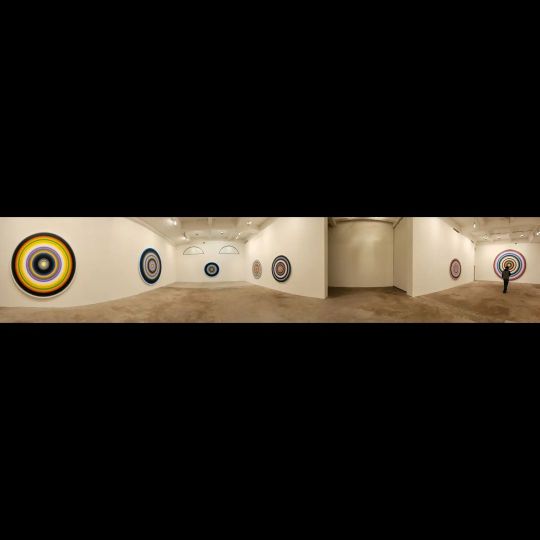
Wonderful Gary Lang show of 35 of his target paintings curated and organized by Paul Schimmel. Unfortunately, this short run exhibition was by invitation only. Hopefully, it will find another venue soon. @garylangart @therealpaulschimmel #abstractpainting #contemporarypainting #abstractsculpture #abstractart #sculpture #sculptor #sheltonbigart rt #contemporarysculptor #contemporarysculpture #petersheltonsculptor #petersheltonsculpture @petersheltonsculptor @petershelton.com @petershelton @sheltonbigart #petershelton #bigart #sheltonbigart (at Venice Beach) https://www.instagram.com/p/Co8MgqgSWRw/?igshid=NGJjMDIxMWI=
#abstractpainting#contemporarypainting#abstractsculpture#abstractart#sculpture#sculptor#sheltonbigart#contemporarysculptor#contemporarysculpture#petersheltonsculptor#petersheltonsculpture#petershelton#bigart
1 note
·
View note
Link
Well this was unexpected news for today.
1 note
·
View note
Photo
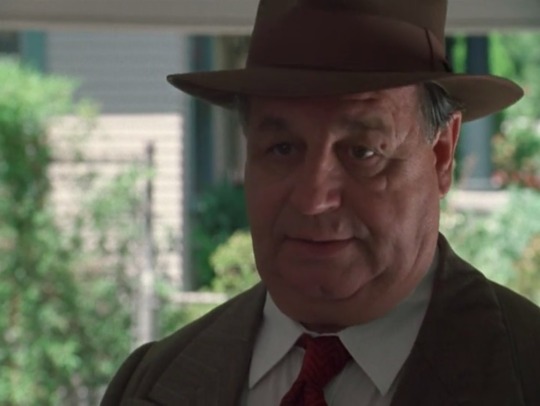


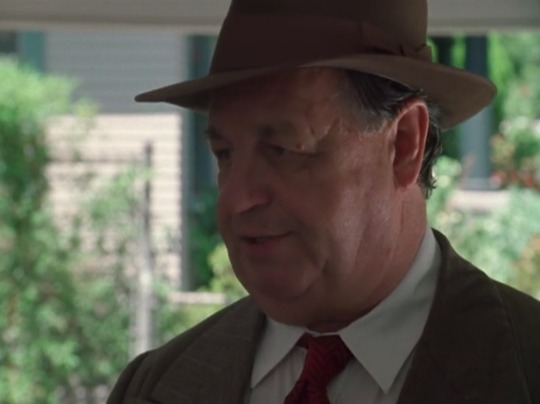
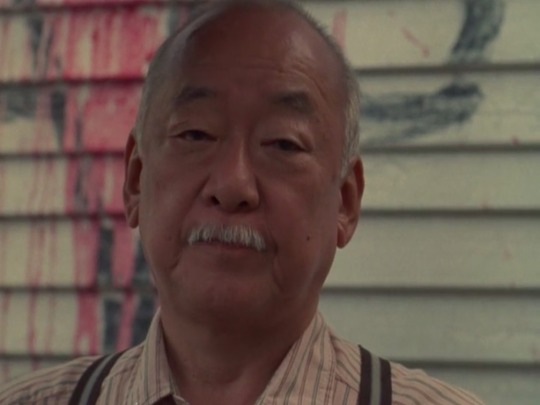

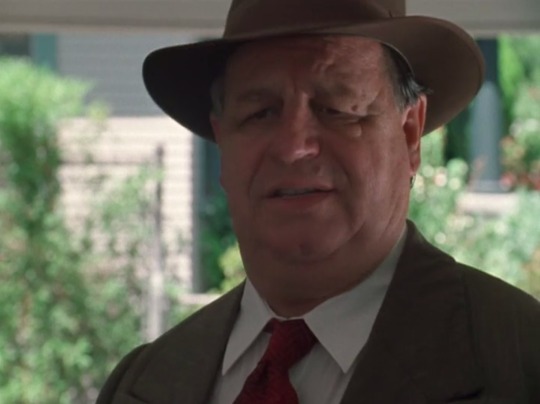

I'll Remember April (2000) - Paul Dooley as Earl Schimmel
I know a lot people don’t care for Dooley, but he can SO catch a dick from me.
Just saying.
On a Side Note: Pat Morita could catch a dick too.
[photoset #2 of 2]
#Paul Dooley#I'll Remember April#american actor#handsome daddy#daddy#husky daddy#suited daddy#suit & tie#celebrities#hats#screenshots#CILF#movie#actor#Pat Morita
42 notes
·
View notes
